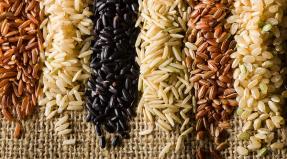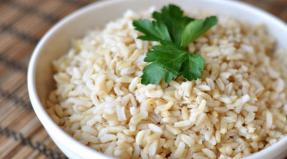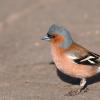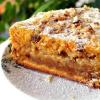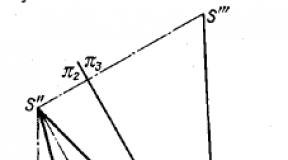Sweet clover (Melilotus officinalis). Melilot officinalis: a poisonous healer Biometric parameters of the leaf blade of white sweet clover
Useful properties and contraindications of sweet clover are known in most European countries. Some types of grass are found in India, China, North and South America. This plant raw material is used not only for medical purposes, but also in cooking, perfumery, alcoholic beverage industry, it is used to flavor food and tobacco products.
Features of a medicinal plant
Sweet clover yellow grows in the wild. It is a good fodder plant, a green fertilizer for the soil and a quality honey plant. Recently, its healing properties have been increasingly valued, so in some countries it is cultivated, new varieties are being developed.
area
This is a medicinal plant of the steppe and forest-steppe zone. Distributed throughout the European part. He loves the southern regions, Minor, Central Asia, the Caucasus. In Russia, it can be found even in Western Siberia. Most species of sweet clover grow in Ukraine. Also, this plant can be found in North and South America, New Zealand.
Botanical characteristics of sweet clover
It is a biennial herbaceous plant. It has a branched, upright stem. Its height can reach from 50 to 150 cm. Leaves with a serrated edge, trifoliate. The plant is easily recognizable by its characteristic bright yellow flowers, which are collected in thin brushes in the form of spikelets. Donets exudes the aroma of coumarin, it can be described as "the smell of freshly cut grass."
Other types
There are three more types of this plant, which are used in traditional medicine and beekeeping.


Procurement of raw materials

Dried sweet clover has a fragrant, pleasant smell of cut grass. It is important to maintain storage conditions - protect the grass from moisture. If mold appears, raw materials should not be consumed.
healing action
What are the medicinal properties of sweet clover?
- Expectorant.
- Anticonvulsant.
- Emollient.
- Soothing.
- Wound healing.
- Anticoagulant (anticoagulant).
- Painkiller.
- Absorbable.
- Carminative.
- Anti-inflammatory.
- Distracting.
What is in the chemical composition?
- Coumarin, dicoumarin (prevent blood clotting).
- organic acids.
- Glycosides.
- Slime.
- Vitamins C, A.
- Essential oil.
- Flavonoids.
- Tannins.
Indications
What are the indications for treatment with yellow sweet clover?
- Varicose veins. Grass reduces capillary permeability. The main use of sweet clover is chronic venous insufficiency, varicose veins, thrombophlebitis, hemorrhoids. Herbal medicines help relieve pain, itching, swelling, heaviness in the legs, cramps in venous insufficiency.
- Outdoor use. Compresses and lotions are used for bruises, sprains, subcutaneous hemorrhages, non-healing wounds, abscesses, boils, tumors. The tool well stops external bleeding, relieves swelling, inflammation in the joints, pain in rheumatism, arthrosis, gout. With fluxes, it is recommended to rinse the mouth with sweet clover decoctions.
- Respiratory system . Decoctions help with coughing, inflammation of the respiratory system. They are prescribed for bronchitis, tracheitis, laryngitis.
- Digestive organs. The sweet clover herb acts as a mild laxative and carminative. Helps with indigestion, relieves spasms, bloating.
- Nervous system . The tool is known for its sedative, narcotic properties, relaxes the nervous system, helps with insomnia, neurasthenia, psychosis. It is drunk with migraines, severe headaches, convulsions.
- Leukopenia (decrease in the level of leukocytes). Often the disease develops after radiotherapy for cancer. Grass promotes an increase in leukocytes.
- For women . Nursing mothers apply compresses for inflammation of the mammary glands (mastitis), cracked nipples. They act as a distraction and anti-inflammatory agent. Also, the herb normalizes the menstrual cycle, it treats inflammation of the ovaries. It is useful to drink during menopause - it relieves irritability, tension, normalizes sleep.
- For men . Most often, the remedy is used for prostate adenoma, which develops in men after 50 years. The herb acts as a resolving, analgesic and anti-inflammatory agent.
Yellow sweet clover contraindications: low blood clotting, hemorrhagic diathesis (tendency to internal and external bleeding), liver disease, pregnancy, childhood. Dangerous grass for the kidneys, with diseases of the central nervous system, mental disorders. Medical consultation before using this herb is strictly required.

Ways to prepare and use sweet clover
What is the use of sweet clover at home? Decoctions, infusions, ointments are prepared from the herb. It is also used in cooking, and sweet clover honey is one of the highest quality varieties of honey.
Decoction
Grass can be brewed separately. It is also often included in the fees that treat abscesses. It is a good emollient, anti-inflammatory, expectorant. It is taken for varicose veins, insomnia, respiratory diseases.
Cooking
- Take 1 tbsp. a spoonful of herbs.
- Pour in a glass of boiling water.
- Boil 1 minute.
- Leave for 1 hour.
- Strain.
Decoctions are taken orally 1 tbsp. spoon after meals 3 times a day. Used externally in the form of lotions and compresses.

Infusion
There are several recipes for infusions. Cooler infusions are recommended for external use.
Preparation of a weak infusion
- Take 1 tsp. herbs.
- Pour in a glass of boiling water.
- Insist 40 minutes.
- Strain.
Warm infusion is taken orally ¼ cup 3 times a day. Good for insomnia and nervous disorders.
Preparation of concentrated infusion
- Take 1 tbsp. l. herbs.
- Pour in a glass of boiling water.
- Insist 2 hours.
- Strain.
Such an infusion can be taken in 1 tbsp. l. 3 times a day.
In gynecology, infusions are taken orally, they are also used externally in the form of douches, tampons, and baths. Concentrated infusions are added to therapeutic baths for diseases of the joints.
Ointment
The ointment is prepared on the basis of fat - melted pork, duck, goose, butter or petroleum jelly. It can be used for mastitis, diseases of the blood vessels and joints, for bruises, bruises, abscesses, for the maturation of boils.
Cooking
- Take 1 tbsp. l. herbs.
- Mix in ¼ cup duck fat.
- Bring the mixture to a boil.
- Leave until cool.
The ointment is applied to a napkin and applied to the affected area of \u200b\u200bthe skin or sore spot.

Features of use for varicose veins
Treatment of varicose veins is a long and complex process. It is important to include the right diet and drinking regimen, gymnastics, massage. An important role is influenced by the lifestyle, age, occupation of the patient. There are positive reviews about the treatment of yellow sweet clover with the threat of blood clots. Also, varicose veins are treated with other herbal remedies: horse chestnut, figs, hare cabbage, hops, thistle, comfrey, milk thistle, Kalanchoe, goat's rue, lungwort, asparagus.
How to prepare a decoction for the treatment of veins
- Take 1 tbsp. l. dry grass.
- Pour 2 cups of warm water (not boiling water!).
- Insist 4 hours.
- Strain.
How to apply herb for veins? Drink 1 dessert spoon 3 times a day before meals. Doctors recommend taking this medicinal plant in combination with other herbs.
How to prepare herbal collection for the treatment of veins
- Take 2 parts of milk thistle herb, hazel leaves.
- Add 1 part sweet clover grass and prickly harrow herb.
- Mix and take 1 tbsp. collection spoon.
- Pour in 1.5 cups of water.
- Boil for 10 minutes and leave for 1 hour.
Take a collection of ¼ cup 3 times before meals.

sweet clover honey
Sweet clover secretes a lot of nectar. Due to the unique structure of the flower, nectar does not evaporate in hot weather and is not washed away by rain. This honey plant is grown industrially to obtain valuable sweet clover honey. The greatest honey productivity is given by annual and white sweet clover. Sweet clover honey is not only a useful delicacy, but also a valuable medicine. It is used externally for mastitis, abscesses, tumors, pain in muscles and joints. Inside take with cough, hypertension, indigestion, headaches, fatigue, neuroses. Read more about our other article.
cooking
Among the Slavic peoples, sweet clover is not such a well-known herb in cooking. However, among southerners and Caucasian peoples, this is a popular seasoning for fish and meat dishes. Fresh, dry leaves and flowers are put into salting, preservation, salads and soups are prepared from them, they are added to homemade cheeses and tinctures. As a condiment, sweet clover should be used in moderation, since its excess in the diet can cause side effects.

Side effects
Sweet clover is a poisonous plant. Overdose and uncontrolled intake lead to pronounced side effects:
- dizziness;
- drowsiness;
- headache;
- nausea and vomiting;
- hemorrhages;
- paralysis.
What is important to know?
- You can not increase the dosage of the herb.
- Do not give to children.
- If side effects occur, contact your doctor immediately.
- White sweet clover is considered more toxic, so it is much less often used as a medicine.
Melilot officinalis - the first remedy for varicose veins and hemorrhoids. Also, the herb is effective for convulsions, agitation of the nervous system, insomnia. This is an effective distraction, analgesic and anti-inflammatory agent for mastitis, rheumatism, gout. Ointments, compresses are made from it and applied to sore spots.
Sweet clover is a herbaceous biennial of the legume family. It is found on all continents, but is most common in Eurasia. Among the people, the plant is known under the names "sweet clover", "burkun", "sleepy grass", "hare chill", "soapy grass", "stable". Although it is impossible to call sweet clover exclusively decorative, it brings great benefits to the site and to the person, and is also an excellent honey plant. Because of this, it is worth sowing it on the site at least once every few years.
Botanical description
Sweet clover is a biennial or juvenile herbaceous culture up to 1-2 m high. A strong, branched rhizome can penetrate the soil to a depth of 150 cm. Nodules with nitrogen-fixing bacteria form on underground processes. Thin, slightly branched stems are covered with a smooth green skin. They form tall but transparent aerial vegetation.
On the shoots are small ovate or lanceolate leaves with wavy or serrated edges. They are slightly bent along the central vein. The foliage is painted in a bluish-green tint. Each petiole has 3 separate leaves. Small stipules are located at the junction with the stem. In the middle leaf, the petiole is somewhat longer than the lateral ones.














Long but narrow racemose inflorescences form on the tops of the stem and its lateral processes. Small corollas on short flexible pedicels are shaped like a moth 2-7 cm long. Flowers are painted yellow or white. The flowering period starts from June to August and lasts about a month. By mid-September, fruits ripen - small elongated beans with a few yellowish-brown seeds that look like beans.
Types of sweet clover
The genus of sweet clover cannot be called diverse. It includes only 22 plant species.
Sweet clover (yellow). A biennial plant with a taproot rhizome forms an airy, branched shoot 100-150 cm high. It is covered with small triple lanceolate leaves. The lobes grow on thin petioles and have jagged edges. Inflorescences in the form of narrow loose brushes bloom on thin shoots. Small moth corollas are painted yellow. Petals surround 10 long stamens, 9 of them with fused filaments. Depending on the climate, flowering occurs in June-September.

Biennial or annual with a branched stem grows 60-170 cm in height. The shoot is covered with rare trifoliate leaves. The top is decorated with a narrow brush with small white flowers. They bloom in summer. In total, flowering lasts about a month, but a single flower lives up to 2 days. The plant produces a large amount of nectar and is the best honey plant in the genus.

A rather compact herbaceous annual grows 15-50 cm in height. Its stems are covered with small, obovate leaves of dark green or bluish color. Short loose racemes consist of yellow flowers 2-3 mm long. They bloom in the first half of summer.

Annual herbs grow slightly pubescent, slightly branched shoots 15-100 cm long. The lower part of the stem gradually becomes reddish. The leaves closer to the ground are larger. Together with the petiole, their length reaches 6.5 cm. The color of the foliage is bright green. In summer, loose brushes with yellow moth flowers 5-7 mm long bloom on the shoots.

Growing from seeds
Due to its short life cycle, sweet clover is propagated by seeds. They are sown immediately in open ground before winter or in March-April at a temperature of 0 ... + 4 ° C. Before sowing, the seeds are soaked in warm water for 2-4 hours to soften the skin. For better germination, scarification is also carried out.
For sowing, holes are prepared with a depth of 1.5-2 cm at a distance of 50-60 cm. Seeds are scattered manually or agricultural machinery is used. Seed consumption rate: 200-250 g/ar. Shoots appear in 10-15 days. When the seedlings grow a few true leaves, they are weeded, increasing the distance between plants up to 30 cm. In the first year, flowering occurs towards the end of summer, so the fruits do not ripen. It is not so plentiful.

Features of care
In care, sweet clover grass is not whimsical. The right choice of location plays a decisive role. The plant needs a lot of light. It tolerates intense heat and frost equally well, so it does not need shelter.
The soil for planting can be heavy clay, sandy or rocky. Even on saline soil, sweet clover will grow. However, on acidic and flooded lands, he will not survive. It also adapts well to limestone. Before planting, the soil is fertilized with a small amount of organic matter. More fertilizer is not needed.
The plants are drought tolerant, so they usually don't need watering. Only with a long absence of precipitation, when the soil is very cracked, it is possible to water the plantings by sprinkling.
In autumn, the entire above-ground part dries up and dies. A well-developed, long rhizome is preserved underground. Already in early spring, new shoots appear from the renewal buds. If there is too much water from the melted snow, the shoots may rot.

When sweet clover is used as green manure, fodder and medicinal crop, it is cut at the budding stage. To increase the green mass, it is recommended to cut the roots with a special cultivator. Then it will develop better and be more saturated with nutrients.
Economic use
Sweet clover brings great benefits to the site. It is an excellent green manure. The rotted biomass, when decomposed, provides the soil with a large amount of nitrogen compounds and other nutrients. At the same time, a strong and long root penetrates into the depths and well loosens even knocked down clods and dense clay.
The earth becomes looser and more fertile. On sandy and light soils, rhizomes, on the contrary, have a binding effect and prevent erosion. If you do not cut the shoots, they will hold the snow. An additional advantage of sweet clover is its ability to fight root rot, wireworms and nematodes. Also, its smell repels rodents.

Fresh grass and hay made from cut sweet clover are rich in nutrients. The plant can easily compete with alfalfa or clover. Unfortunately, as the stems grow, they accumulate a large amount of coumarins, and they also become very tough. Therefore, fodder is harvested at the stage of budding. Sweet clover is recommended to be combined with other plants. It increases the amount of milk and body fat in animals.
Culture has an important role as a honey plant. The most effective sweet clover is white. During the flowering period, bees collect nectar in the amount of 1.5-2 kg/ha.
Sweet clover honey has a whitish, amber color and an intense aroma. It is used not only as a tasty supplement, but also for treatment. The use of the product increases lactation in lactating women. It is also taken as an antispasmodic, diuretic, anti-inflammatory agent. It relieves pain, relieves hypertension, spasms of the respiratory tract. It is also used externally, applying compresses to the chest with mastitis.

medicinal properties
Sweet clover is rich in coumarins, essential oils, resins, mucus, tannins. It is actively used in folk medicine. For medicinal purposes, flowers and the upper part of the shoots with leaves are used. They are cut and dried, then rubbed with hands, and the hard stems are removed. The resulting raw materials are stored in paper envelopes for up to 2 years. It has a strong dense aroma and a bitter aftertaste.
Ointments, decoctions and alcohol infusions are made from dry grass. Decoctions and tinctures are taken orally to treat insomnia, headaches, hypertension, bronchitis, flatulence and cystitis. Decoction compresses are applied for mastitis, sciatica, sprains, hemorrhoids, inflammatory processes and skin wounds. An ointment from the flowers helps relieve joint pain.
Treatment with sweet clover has contraindications. First of all, without exception, everyone should not increase the dosage, since coumarins can have a negative impact on health. As a result, dizziness, insomnia, headache appear. Also sweet clover is contraindicated in internal bleeding and liver disease.
Melilot officinalis is a herb of the legume family, belongs to the Motylkovy subfamily.
Description
A biennial herbaceous plant with a tap root, reaching a height of 1 m.
It is characterized by a strongly branched erect stem, rounded from below, angular from above, small trifoliate leaves, obovate in shape, sawtooth-serrated directly at the edge, yellow flowers, collected in numerous apical axillary racemes. The whole plant is slightly silvery, the leaves are whitish below, bluish above. The fruits are bare beans, single-seeded, oval, short, brown in color, with an awl-shaped pointed top.
Sweet clover is very fragrant, blooms almost the entire summer period, the fruits ripen from July to late autumn. It is coumarin that gives the plant a pleasant fragrant smell. The plant is unpretentious and drought-resistant.
It grows wild in ravines and meadows, in wastelands, on roadsides.
It is found everywhere in Russia and Ukraine, in the steppe regions of the Caucasus, Central, Minor and Central Asia, in New Zealand, Great Britain, South and North America, and Europe. Quite often it grows with white sweet clover, its relative, a flower that differs in color, namely white, and also in the shape of the surface of the beans - more wrinkled.
It has a number of other names: burkunets, yellow sweet clover, yellow burkun, wild buckwheat, burkun, Italian grass, bottom grass, female sweet clover, meadow burkun.
Sweet clover is often grown specifically for medicinal and culinary purposes. In medicine, along with medicinal sweet clover, tall sweet clover is also widely used, distinguished by beans with medium hairs and larger flowers with a sown calyx.
Chemical composition
In the flowers of sweet clover, the maximum amount of coumarin is concentrated.
In sweet clover grass: coumarin, melilotin, dicumarol, coumaric acid, choline, melilotozide glycoside, purine derivatives, melilotic acid, protein, essential oils, fat-like substances, mucus, sugars, vitamins A, C, E.
Medicinal and beneficial properties
Sweet clover is endowed with analgesic, antispasmodic, expectorant, antibacterial, diuretic, sedative, lactagon action, which is reflected in the treatment of various diseases.
The plant is among the biogenic stimulants. Sweet clover extract, which is confirmed by animal studies, promotes faster regeneration of damaged tissues, softens the effect of psychotropic drugs and narcotic drugs by inhibiting the nervous system.
Recently, scientists were able to discover the antitumor properties of the plant (coumarin, as it turned out, stimulates an increase in the number of leukocytes). Coumarin is also characterized by a hypertensive effect, increases blood pressure, increases the cardiac output, sufficiently relieves convulsions.
The plant improves blood circulation in relation to the abdominal organs, and also improves coronary, peripheral and cerebral blood supply.
Melilot officinalis is widely used in the pharmaceutical industry for the production of a pull-out green patch. In the pharmacy network, this plant is found separately and as part of emollient fees, which contribute to the faster opening of boils and abscesses.
As a result of the decomposition process of coumarin, dicoumarin is formed, which is a very potent anticoagulant, which is used in the treatment of thrombophlebitis. Sweet clover is widely used in homeopathy as well. A common homeopathic remedy "Melilotus", made from fresh sweet clover grass, is recommended for nosebleeds, migraine headaches, neurosis, melancholy and even psychosis due to hyperemia, during menopause.
Medicinal sweet clover preparations are widely used in the treatment of bronchitis, cough, migraine, hysteria, neuropirculatory dystonia, increased nervous excitability, diffuse toxic goiter, gouty and rheumatoid arthritis.
Various infusions and decoctions are made from the plant, and a sweet clover plaster is used for skin purulent-inflammatory processes. Decoctions and infusions of sweet clover are taken internally as an anticonvulsant and sedative, with coronary artery disease. Melilot officinalis for colds is used for expectoration of sputum.
Externally used in the treatment of rheumatism. In folk medicine, the plant is widely used to treat constipation and flatulence, to treat women's diseases. Purulent wounds and boils are treated with plant-based ointments. Sweet clover honey is very valuable.
With mastitis, honey is applied to the mammary glands, and with arthritis and arthrosis, honey massage is done. Sweet clover honey is also widely used for hypertension, insomnia, migraines, flatulence, dropsy, bronchitis, and joint tumors in rheumatism.
Indications for use
The main indications of Sweet clover officinalis:
- atherosclerosis;
- hypertonic disease;
- thrombophlebitis;
- spasms;
- diseases of the gastrointestinal tract;
- articular rheumatism;
- gout;
- haemorrhoids;
- constipation;
- flatulence;

- epidemic encephalitis (in collections);
- cystitis;
- gynecological diseases;
- neurasthenia;
- insomnia;
- insufficient lactation;
- furunculosis;
- abscesses;
- mastitis;
- headaches and heartaches;
- diseases of the bronchi, lungs, upper respiratory tract.
Contraindications
It should be borne in mind that the sweet clover is a poisonous plant and it is impossible to use the plant in large doses.
Melilot officinalis has the following contraindications:
- internal bleeding;
- reduced blood clotting;
- kidney disease;
- hemorrhagic diathesis;
- pregnancy.
Depressing effect at high doses on the central nervous system.
Overdose
When using the plant in large doses, uncontrolled and prolonged use, the following symptoms are observed:
- feeling of nausea;
- headache;
- drowsiness;
- dizziness;
- vomit.

In some cases:
- liver damage;
- hemorrhages;
- CNS paralysis.
Traditional medicine recipes
Commonly used recipes:
Sweet clover infusion (cold):
- 2 teaspoons of carefully chopped herbs are mixed with 2 glasses of cold water, insisted for 4 hours, then filtered. Ready infusion is taken 2-3 times a day for? glass, 20-40 minutes before meals.
- compresses, baths for external use - at the rate of 2 tbsp. tablespoons of grass in two cups of boiling water, insist for half an hour, then filter.
Sweet clover decoction:
- for one glass of water - 10 g of chopped dry grass, boil over low heat for half an hour, then filter, shown three times a day for 1 tbsp. spoon for SARS, liver disease, insomnia, bronchitis.
Alcohol tincture of sweet clover (direct aiming):
- 0.5 liters of vodka or diluted alcohol (40%) is poured into 100 g of dry raw materials (grass), insisted for two weeks, then filtered and taken orally 10–15 drops 3 times a day before meals, washed down with water, store the tincture in refrigerator, up to two years;
- tincture is used for migraine, endometriosis, hormonal imbalance, infertility.

Fresh herb sweet clover extract:
- 0.5 l of vodka is poured into 50 g of chopped fresh herbs, in a dark place insist for two weeks, then filtered, administered orally twice a day, 15 drops.
Sweet clover ointment:
- 2 tbsp. spoons of dried flowers of the plant are carefully ground to a powder state and then kneaded in 50 g of petroleum jelly, mixing with butter is allowed (50-60 g of fresh sweet clover flowers with 3 tablespoons of butter), but the shelf life of the finished ointment in this case will completely depend from the expiration date of the oil itself, the ointment is ready to help with carbuncles, boils, purulent wounds, relieves inflammation.
Oil Extract:
- one part of the cut grass is mixed with 9 parts of sunflower oil, insisted on a water bath for 3 hours, then filtered hot using a cotton swab, used to accelerate the “ripening” of the boil.
Other recipes:
- steamed herb sweet clover for joint pains is tied into small bags and applied directly to the sore spot, as a rule, the pain subsides after 15–20 minutes, the therapeutic course is 10 days.
Procurement of raw materials
Medicinal raw materials are directly tops of grass with leaves, side shoots (up to 30 cm long), flower brushes harvested during flowering are also taken. Harvesting should be carried out in the flowering phase, at which time the maximum concentration of biologically active substances is recorded. As a rule, the grass is cut with a knife, but not the entire above-ground part goes further into processing, but only the top up to 30 cm long. The stems are thick and coarse and are completely unsuitable as medicinal raw materials.

Harvesting of plants should be carried out only in clear and dry weather, when the dew has completely disappeared, since a wet plant quickly deteriorates. Sweet clover very often grows with white sweet clover, but in the case of their further harvesting, they should be separated from each other.
Drying after direct collection should in no case be postponed, otherwise it may darken and deteriorate. Sweet clover is dried, as a rule, in attics, under sheds, in a well-ventilated place, laying out the grass in a thin layer (not > 5 cm), directly on paper or cloth, while turning it over periodically. It is also allowed to dry the plant in a dryer, but at a drying temperature of no more than 40°C.
Regarding the taste, the resulting raw material is salty-bitter, with a strong coumarin aromatic smell (of fresh hay).
Raw materials are stored in sealed containers for up to 2 years.
Latin name Melilotus officinalis (L.) Pall.
Other names. Burkovina, borkon, wargun, sticky, okladnik.
Kazakh name. Tuyezhonyshka.
The word "sweet clover" comes from "bottom" - the ancient name for gout. The word "duna" in the Proto-Slavic era denoted diseases of the lower part of the abdominal cavity and gout.
The generic name Melilotus is derived from the Greek meliloton, associated with the Greek meli (honey) and lotos (lotus, a type of clover) - "honey clover". The flowers of this plant attract bees, are a good honey plant, and the leaves of the plant of this genus are trifoliate, like those of clover.
The species definition of officinalis (pharmacy) indicates the medicinal use of the species.
The people called yellow sweet clover: burkun, barko, wild buckwheat, female sweet clover, donets, yellow, sedash, moth grass (helps against moths).
Legume family - Fabaceae LEGUMINOSAE
Description
A biennial herbaceous plant with a branched tap root and straight stems 0.5-1 (2.5) m high.
The stem is straight, glabrous or hairy in the upper part.
Stipules lanceolate, pointed, entire, rarely (near the lower leaves) with 1-2 teeth. Leaves alternate, petiolate, trifoliate; the upper leaflet is on a longer petiole, the two lateral ones are almost sessile. Leaflets of lower leaves are oblong-obovate, leaflets of upper leaves are narrower, oblong; both with 10-13 unequal teeth, shortly pubescent below. The leaves of the sweet clover are bluish-green above, paler below.
The flowers are yellow. Floral racemes are axillary, 4-10 cm long, dense with 30-70 drooping flowers, 5-7 mm long, on pedicels up to 1.5 mm long. The calyx is about 2 mm long, half incised into oblong-lanceolate lobes. The corolla is yellow, the flag is almost equal to the wings, which are slightly longer than the boat; ovary glabrous, oblong, on a short stalk; style slightly curved, usually with 6-7 (rarely 4 or 8) ovules. The threads of nine stamens are fused, the tenth is soldered with the rest only in the middle.
The fruit is a brown bean. Pods are 3-4 mm long, 2 mm wide and about 1.5 mm thick, oval, blunt at the top, with a subulate point, on a short stalk, grayish, glabrous, with a few transverse wrinkles anastomosing with each other.
Seeds are ovoid, greenish-yellow, 1.6 - 2.2 mm long.
Blooms in June - September; seeds ripen from July to late autumn.
Spreading
Euro-Asian view. Distributed throughout the European part of Russia, except for the northern and northeastern regions. Most often found in the southern black earth regions; becomes rarer further north. The northern border of the range runs along the southern and eastern shores of Lake Ladoga, skirting Lake Onega from the north, and near 52 ° N. sh. passes northwest of Syktyvkar, bypasses the city of Ukhta from the north, after which it descends sharply to the south, crosses the Vyatka in the middle and lower reaches and, south of Perm, goes to the Ural Range.
In Western Siberia, it grows in the forest-steppe and steppe zones from 51° to 56° N. sh. (Baraba and Kulunda steppes), moving along the Ob valley to the north to 59 ° N. sh. In the east, it is distributed up to 96 ° E. (Yenisei island steppes and Kansk forest-steppe). As an adventive plant, it is occasionally found in the Baikal region. In the south, sweet clover goes to the border with Kazakhstan, entering the territory of this republic from the north-west along the left bank of the Ishim, goes around the desert regions of the northern Caspian Sea and crosses the Ural River at 51 ° N. sh.
It is distributed in the republics of Central Asia, with the exception of the high-mountainous regions of the Pamir-Alay, Tien Shan and desert regions, where it penetrates only along river valleys and oases. It is also found in the foothills of the Kopetdag.
In the Caucasus, it grows almost everywhere - from the lowlands to the middle mountain belt.
cultivation
Agricultural technology
Sweet clover is a mesoxerophytic plant of the steppe and forest-steppe zones; rises to the middle mountain belt, rarely - almost to subalpine. Thanks to a well-developed root system, penetrating to a depth of 2 m, it can extract water from deep soil horizons. Drought tolerant and cold hardy. It grows well on chernozems, chestnut, soddy-podzolic and gray forest soils, but can also settle on low-humus, stony, loamy and sandy soils. Does not tolerate excessive moisture.
In the natural vegetation cover, it occurs scattered, more often in disturbed areas, in upland and steppe meadows (sometimes solonetzic). Scattered grows in the steppes, sparse light forests, along forest edges, dry slopes of gullies and ravines. It is not a specific weed plant, sometimes it even becomes a malicious weed. Most often found on fallows, it is a part of vostretsov-poa-wormwood and sagebrush-bluegrass groups of fallow vegetation. On young deposits, it sometimes forms thickets with an area of several tens and even hundreds of hectares. Often found in forest belts, especially young ones, in wastelands and along roadsides.
reproduction
Propagated by seeds. A good development of sweet clover is observed with a sufficient amount of spring precipitation, which contributes to the germination of its seeds and the rooting of seedlings. In the first year of life, it develops only a green mass and a root system that dies off in the fall. The root neck overwinters with renewal buds that can endure frosts down to -48° even in snowless winters (9). In the second year, the growth of sweet clover begins in early spring. Flowering is extended, lasts about 2 months.
Varieties
Along with sweet clover, other types of sweet clover are often found. About 20 species of this plant are known. 11 grows in Russia.
Along with medicinal sweet clover, tall sweet clover, Melilotus altissimus Thuill, was also allowed to be used in scientific medicine. It is a biennial plant with a thick taproot. Pods are indistinctly reticulate-wrinkled due to the presence of anastomosing veins, drooping, with sparse hairs, ovate-rhombic, compressed along the ventral suture, with 1-2 seeds. Tepals falling off in fruits; flowers yellow, large, up to 7 mm long, calyx pubescent. Stipules entire, subulate; racemes dense, many-flowered.
The tall sweet clover has a European type of range. B occurs mainly in Ukraine (Middle Dnieper, Upper Dniester and Carpathian floristic regions) and in Moldova. In Russia, it is noted as an alien plant in a number of regions of the Volga region, in the vicinity of St. Petersburg and Barnaul. Grows in wet meadows and pastures, in areas with disturbed sod cover. Due to the rare distribution, it is almost not harvested.
Not used in scientific medicine. White sweet clover - Melilotus albus Medik. distinguished by white flowers and entire subulate stipules. Toothed sweet clover - M. dentatus Pers. has small pale yellow flowers, narrow-lanceolate, expanded at the base, and incised-toothed stipules. To the east of the Yenisei, medicinal sweet clover is replaced by fragrant sweet clover - M. suaveolens Ledeb. It is distinguished by its light yellow flowers, smaller, obscurely reticulated, wrinkled pods, and stronger fragrance.
Chemical composition
Active ingredients
Contains phenolcarboxylic acids. In the aerial part, coumarins (1.2%), protein (up to 21%), protein (16%), fiber (up to 25%), purine derivatives, essential oil 0.01% were found, in the seeds - fatty oil (2, 7%). Dry grass contains 0.4-0.9% coumarin, which gives the plant a pleasant smell. In a smaller amount, it contains melilotin, which has the same smell.
Application
food application
Magnificent plant - Melilot officinalis. Smokers added dried sweet clover flowers to shag for a smell, and housewives steamed pots with grass so that milk would not sour. Sometimes vodka is insisted on sweet clover, putting a flowering plant without roots in it.
Sweet clover is a good honey plant. Not a single bee land is complete without a spill of its flowers. Indeed, on a hectare of sowing of these flowers, a total of almost two billion. From 1 hectare of thickets get up to 200 - 300 kg of honey. Sweet clover honey is light amber in color with a delicate aromatic smell.
Sweet clover leaves are used as an aromatic agent in the alcoholic beverage, tobacco and perfume industries as an odor fixative, as well as in the manufacture of green cheese. In the Caucasus, young fresh roots are eaten raw or boiled. Fresh leaves are used as a dressing in soups and salads. Dry leaves and flowers serve as seasoning for soups, salads and compotes.
A valuable fodder plant, nutritionally not inferior to alfalfa and clover, but better eaten in hay and in the form of silage. Fresh sweet clover is eaten poorly by animals due to the strong coumarin smell. It is used as green manure to enrich the soil with nitrogen. Dye is obtained from sweet clover. Serves as an export item.
medicinal use
Collection and processing of medicinal raw materials
Due to the low demand for raw sweet clover, its harvesting is carried out in a limited amount in the black earth regions of the European part of Russia. In the forest-steppe regions of Ukraine, annual harvesting is possible in the amount of 100-200 tons, in the steppe - 50-70 tons.
Mass harvesting can also be carried out in Bashkiria, in the lowlands of Transcaucasia. The productivity of the sweet clover is 1.5 - 3 q/ha.
Collection item. Grass.
Collection and processing of raw materials. Grass is harvested during flowering, cutting off the tops and side shoots up to 30 cm long without thick coarse stems with knives or sickles.
Drying. Dry sweet clover grass under an iron roof or sheds with good ventilation, spreading a thin layer of 5-7 cm on paper or fabric.
The quality of the finished raw material. The raw material consists of whole leafy flowering tops and lateral branches of plants with a stem up to 3 mm in diameter and up to 30 cm long. The color of the stems, calyxes and fruits is green, the corollas of the flowers are yellow.
The smell is fragrant (coumarin). The taste is bitter. Humidity - no more than 14%. The content of total ash - no more than 10%. Stems with a diameter of more than 3 mm, no more than 2%. The content of yellowed, brown and blackened parts of plants - no more than 2%. In raw materials, crushed particles passing through a sieve with a hole diameter of 0.5 mm are allowed - no more than 5%; organic impurities - no more than 1%; mineral impurity - no more than 0.5%.
Storage. Store in dry, well-ventilated areas on pallets or racks. Shelf life. 2 years.
Application in official and traditional medicine
Sweet clover has anti-inflammatory, antispasmodic, hypotensive, expectorant, analgesic, wound healing properties. Sweet clover extract depresses the central nervous system and has an anticonvulsant effect, promotes an increase in leukocytes in patients after radiation sickness.
Melilot grass preparations are prescribed for hypertension, ischemia, atherosclerosis, thrombophlebitis, increased blood clotting, and bronchitis.
In India, it is used as an aromatic, emollient, hemostatic agent, for flatulence; in China - in collections for the treatment of epidemic encephalitis. The aerial parts were included in the domestic pharmacopoeias of I-VIII editions. Sweet clover grass is used in official medicine in Germany, Austria, Poland, Romania, and the Netherlands.
In homeopathy, sweet clover is used to prepare essences, it is used orally for menopausal ailments and psychoses due to hyperemia. In folk medicine, it is prescribed as a laxative, sweet clover grass is included in emollient fees used for gynecological diseases. An infusion of herbs is prescribed as a sedative, diuretic, expectorant, antibacterial agent, for flatulence, diseases of the upper respiratory tract and lungs, hypertension, atherosclerosis, as a hypotensive, antispasmodic, analgesic. In Azerbaijan, it is used as a lactagon.
Infusion, decoction is used externally (lotions, compresses, poultices, baths, washings, ointments, plasters) - as an irritating, distracting, anti-inflammatory, cleansing, emollient, for abscesses, furunculosis, mastitis, articular rheumatism and malignant tumors. In Bulgaria, infusion and decoction are used as anticoagulants and fibrinolytic agents for chronic bronchitis, cystitis, migraine, hypertension. In Poland - with neurasthenia, heart and headaches, insomnia. In Germany, Austria - for diseases of the stomach and bronchitis, in France, a decoction is prescribed orally as an antispasmodic and astringent, in the form of baths - for gout. In Bulgaria, the tissue preparation "Meliocin" was obtained from the leaves, the biostimulating effect of which is twice as high as that of aloe extract.
Contraindications
Pregnancy, kidney disease. Exceeding the dosage causes poisoning with symptoms of nausea, headache, bleeding gums.
Sweet clover medicinal properties
Therapeutic action:
- 2 anti-inflammatory
- 6 laxative
- 8 diuretic
- 11 expectorant
- 12 annoying
- 18 sedative
- 19 lactogenic
- 24 hemostatic
- 25 analgesic
Toxic. Toxicity - antibacterial, insecticidal, raticide
Indications for medical use:
1 diseases of the digestive system
2 diseases of the kidneys and urinary tract
3 diseases of the cardiovascular system
5 diseases of the respiratory system
8 diseases of the skin and subcutaneous fat
9 diseases of the nervous system
10 diseases of the reproductive system
11 mental illness
15 diseases of the musculoskeletal system
16 metabolic diseases
17 infections and infestations
19 symptoms and syndromes
20 pain syndrome
21 neoplasms
Recipes for various diseases
Amenorrhea
Collection 1. Mix equal proportions of sweet clover and centaury herbs and coltsfoot flowers. Pour 1 tablespoon of the collection with 1 cup of boiling water, insist for 2 hours, strain. Take 1/3 cup of infusion 6 times a day for a month. The infusion is used if amenorrhea is caused by inflammation of the ovaries.
Arthritis
Collection 1. Mix in equal parts sweet clover herb, wild rosemary herb, burdock roots, juniper berries, couch grass roots, hop cones and thyme herb. Fill the bottle with raw materials, pour vodka. Insist 10 days in a dark place. Use for rubbing.
Atherosclerosis
Collection 1. Sweet clover grass - 1 part, rose hips - 1 part, raspberries - 1 part, nettle leaf - 1 part, horse chestnut flowers - 1 part, hawthorn flowers - 1 part. 1 tablespoon of the mixture is poured with a glass of boiling water, insisted for 2 hours. Filter. Take 1/4 cup 3 times a day after meals.
insomnia
Collection 1. Pour 1 teaspoon of sweet clover grass with 1 glass of boiled water at room temperature, insist for 2 hours, strain. Take 1/4 cup of infusion at night.
Bronchitis
Collection 1. Take 2 teaspoons of sweet clover grass, pour 2 cups of cold boiled water, insist under the lid for 2 hours, strain. Take 1/2 cup 2-3 times a day.
Hypertension
Collection 1. Pour 1 teaspoon of sweet clover herb with 1 cup of boiled water at room temperature. Insist for 2 hours, strain. Drink 1/2-2/3 cup 2 3 times a day. The infusion not only lowers blood pressure, but also increases the level of leukocytes in the blood.
Respiratory diseases
Collection 1. Calamus rhizome - 1 part, marshmallow root - 2 parts, chamomile flowers - 2 parts, sweet clover grass - 2 parts, flax seed - 3 parts. Pour 1 tablespoon of the mixture with 1 cup of boiling water, leave for 20 minutes. Filter. Rinse your mouth and throat several times a day for inflammatory processes.
Constipation
Collection 1. Nettle leaf - 1 part, sweet clover grass - 1 part, buckthorn bark - 3 parts. Pour 1 tablespoon of the mixture with 1 cup of boiling water, leave for 30 minutes. Filter. Take 1/2 cup at night for constipation.
myocardial infarction
Collection 1. Take in equal parts sweet clover grass, arnica inflorescences, watch leaves, lily of the valley flowers, peppermint leaves, dill fruits, rose hips, wormwood grass. Pour 1.5 cups of boiling water over 6 g of the collection, insist in a thermos for 6 hours, strain. Take 1/4 cup warm 4-5 times a day.
Radiation sickness
Collection 1. To prepare the infusion, pour 2 tablespoons of raw materials into 1 cup of boiling water, leave for 10-15 minutes, filter and take 1/2 cup 2-3 times a day after meals. Sweet clover infusion increases the number of leukocytes in the blood of patients with radiation sickness,
Flatulence
Collection 1. Take 15 g of dried, crushed sweet clover roots, pour 1 glass of water, bring to a boil, boil for 15 minutes, cool and strain. Take 1 tablespoon of decoction 3-4 times a day.
boils
Ointment preparation. 2 tablespoons of fresh flowers are rubbed with 2-3 tablespoons of butter until smooth. Used to ripen abscesses.
nervous exhaustion
Collection 1. Take 2 teaspoons of crushed sweet clover grass, pour 1 glass of 70% alcohol and leave for 15 days. Take 5-10 drops 2 times a day.
Rheumatism
Collection 1. Take 1 tablespoon of fresh sweet clover flowers, grind them with 1 tablespoon of butter. Lubricate the sore spots with the resulting mixture.
Bite of a rabid animal
Collection 1. Take 2 teaspoons of sweet clover grass, insist in 2 glasses of water for 10-12 hours. Take 2 cups of infusion 3 times a day.
Furuncles
Collection 1. For the treatment of boils, the infusion is prepared a little differently: 1 tablespoon of grass is poured into 1.5 g cups of boiling water, insisted for 2 hours and filtered. Taken warm 3 times a day, 1/2 cup with meals or used as compresses and washes.
Enterocolitis
Collection 1. Take 6 parts of alder buckthorn bark, 2 parts of sweet clover grass and unground flax seeds each. Take as an infusion for chronic enterocolitis accompanied by constipation, 1/2 or 1 glass at night.
The herbaceous juvenile plant sweet clover (Melilotus) is a member of the legume family. Sweet clover is a valuable green manure and fodder plant, and it has been present in culture for more than two thousand years. Some species of this crop are grown as plants with medicinal properties. This plant is popularly called burkun, bottom grass and sweet clover. In nature, sweet clover is found in Asia and Europe; it prefers to grow in wastelands, meadows and fallows. This herb has a specific smell.
The height of the branched stem of the sweet clover can vary from 0.5 to 2 meters. Rod root. The leaf plates are trifoliate (which looks like a clover), they consist of serrated leaflets. Apical loose elongated brushes consist of small flowers of yellow or white color. The fruit is a naked bean, which has a rounded shape, and reaches a length of 30–40 millimeters. Seeds remain viable for a relatively long time, or rather, for 14 years.
Sweet clover is grown as green manure, because it improves the structure of the soil and saturates it with a substance such as nitrogen. It is also grown as a forage plant, because it forms a nutritious biomass, which contains a very large amount of vitamins. This biomass is distinguished by fattening and milk-producing action. Also, this herb, which has a pleasant smell of fresh hay, is widely used for aromatizing soap, for flavoring tobacco, and in the perfume industry it is used to fix the aroma. This plant is one of the best honey plants. From the nectar collected from the flowers of such a culture, white or amber honey is obtained, which has a very pleasant aroma of vanilla.
Landing in open ground
Only a small number of species of sweet clover are cultivated, with white sweet clover and yellow sweet clover being the most popular among gardeners. This culture is propagated, as a rule, by seed (generative) method. Sweet clover is not very demanding on the composition of the soil. This herbaceous plant grows well on chernozem, solonetz, slightly podzolic and carbonate soil. But in no case should it be planted in acidic soil, and also in swampy areas where groundwater occurs close enough to the soil surface.
Sweet clover has the ability to accumulate nitrogen, as well as extract nutrients from sparingly soluble soil compounds, as a result of which it is able to grow and develop perfectly even on poor or depleted soil. When choosing a site for planting, it must be taken into account that of the large number of representatives of legumes, this crop has the greatest light-loving nature, so the site should be open and sunny.
Before planting, the site should be carefully prepared. For this, it is obligatory digging with the introduction of phosphorus and potash fertilizers, so, 50 grams of superphosphate and 20 grams of potassium salt are taken per square meter.
The seeds of this plant are hard stone, which greatly complicates the emergence of seedlings. Therefore, 20-30 days before sowing, they must be subjected to scarification. To do this, you need to pass the seeds two or three times through clover graters. For these purposes, you can also use specially designed scarifiers.
It is recommended to sow seeds in open soil in April or May. To do this, not very deep grooves are first made in moistened soil, while the distance between them should be from 0.45 to 0.6 meters. After the seeds are sown in open ground, the grooves must be sprinkled with a not very thick layer of soil, after which the surface of the site is carefully compacted. Sowing seeds that have not been subjected to preliminary scarification, experienced gardeners advise to produce in winter, or rather, in February or January, they are simply scattered over the surface of the soil or snow cover. Rains in the springtime, as well as melt water, contribute to the softening of the strong shell of the seeds, as a result of which the seedlings appear on the soil surface even when the temperature rises to 2-4 degrees. In the southern regions, seeds of sweet clover are sown in open soil, as a rule, in August.
If the seeds are sown on the garden plot in the spring, the first seedlings will appear after about half a month. During the formation of a pair of true leaf plates, it is necessary to thin out the plants, and weeding is also carried out, removing all weeds, while gently loosening the soil surface between rows. The recommended distance to be left between bushes in a row is 0.3 meters, but this does not apply to the case when this plant is grown as green manure.
Sweet clover has a very high resistance to drought, in connection with this, it is not necessary to systematically water such a crop. However, it must be fed in a timely manner; for this, phosphorus and potash fertilizers are introduced into the soil.
In the first year of growth, fruits are not formed on the sweet clover bushes, this is because they have an intensive development and growth of the root system. Since the root neck of the sweet clover is in open soil in winter, in connection with this, with the onset of the spring period, it is necessary to ensure that the site is not flooded with melt water during the melting of the snow cover. During flowering, this culture attracts a large number of bees that collect its nectar. It produces excellent honey, characterized by high taste and medicinal qualities.
Sweet clover, like almost all agricultural crops, is subject to a wide variety of diseases, and a variety of pests that damage the plant can also settle on it. Most often, this plant is affected by powdery mildew, ascochitosis, peronosporosis, bacteriosis of the roots, septoria and yellow mosaic. As a rule, bushes are affected by fungal diseases only when they are grown in conditions that are not entirely suitable for this crop. It is recommended that diseased plants be treated as soon as possible with a fungicide solution, for example, Fundazol, Maxim, Bordeaux liquid, Abiga-Peak, etc. If the sweet clover is damaged by a mosaic, its bushes should be removed from the soil as soon as possible and must be destroyed so that this disease does not continue to spread throughout the garden plot. The fact is that such a disease today is not amenable to treatment.
On this plant, pests such as: various kinds of bugs and weevils can settle: clover, red alfalfa and yellow seed-eaters; leaf, nodule and large alfalfa weevils; sweet clover and bristly nodule weevil; green palomena; cabbage, rapeseed, herbal, alfalfa and mustard bugs; marginal and camptopus bordered; wingless red bug; spiny stenodema; ruled, berry and spring stink bugs. In order to get rid of such harmful insects, experts advise using systemic insecticides, for example, such as: Aktellik, Aktar, Karbofos or other means that have a similar effect. For the purpose of prevention, it is imperative to follow the rules of crop rotation, do not forget to weed the site in a timely manner, and do not be lazy to process the soil and seed immediately before sowing. Also in spring and autumn, for the purpose of prevention, the site should be treated with insecticides. If everything is done correctly, then the pests will bypass the sweet clover and will not be able to harm it.
Not only an experienced, but also a novice gardener will be able to grow such a culture in his garden plot. If you follow all the rules of agricultural technology of this crop and properly care for it, then problems with sweet clover should not arise at all.
Experts advise harvesting sweet clover during its flowering. To do this, using scissors or a pruner, it is necessary to cut off all the side shoots, as well as the apical racemose inflorescences. The resulting medicinal raw materials must be tied into not very large bundles, which should be hung from the ceiling in a dry and well-ventilated room, where they can dry very well. For these purposes, you can also use an electric dryer, while it should be set to a temperature of 40 degrees, no more, no less. After the shoots are completely dry, they will need to be thoroughly threshed. Then the resulting mass of medicinal raw materials must be sifted using a sieve made of wire, which will remove large pieces of stems that need to be thrown away. Medicinal properties have foliage, small shoots, fruits and flowers of sweet clover, which have the smell of coumarin and a bitter-salty taste. To store dried sweet clover, tightly closed containers made of ceramic or glass are used. Medicinal raw materials of sweet clover should be stored in a dark and dry place.
Types and varieties of sweet clover with photos and names
Only two types of sweet clover are the most popular among gardeners. Their detailed descriptions will be given below. Some of their varieties will also be described, which are also often grown in garden plots in various regions.
White sweet clover (Melilotus albus), or burkun, gunba, gunoba, male sweet clover, verkin grass
The height of this biennial plant can vary from 0.3 to 1.5 meters. This pasture and silo crop has pinnate leaf blades, stipules that have an awl-shaped shape, as well as axillary inflorescences consisting of white flowers of a moth type. This honey plant differs from others in that it produces nectar even during a long dry period, while the bees fly to the sweet clover, because they are attracted by the rather pleasant aroma of hay. In the wild, this culture can be found on the territory of Belarus, Kazakhstan, Siberia, Ukraine, Moldova, Central Asia and the Caucasus. She prefers to grow on slopes, along the edges of fields and roads, in ravines and dry wastelands. Gardeners cultivate the following varieties of white sweet clover:
- Medet. This early maturing plant is related to the Siberian ecotype. The height of the bush can vary from 1.1 to 1.2 meters. The medium thickness shoots are rather rough. A long narrow racemose inflorescence consists of large white flowers. This variety is highly resistant to drought, frost, it is also salt-tolerant, and it is not afraid of any diseases and harmful insects, so there will be no problems with its cultivation.
- Frost. This plant has good bushiness. Bare shoots, with medium coarseness, are painted in a green color tint. Bare trifoliate leaf plates have a green color, as well as a slightly serrated edge. The elongated loose racemose inflorescence is many-flowered and consists of white flowers. Beans are elliptical in shape. The plant is highly resistant to powdery mildew, but it is susceptible to damage by weevils.
- Chermasan. The height of this precocious plant is about 200 centimeters. The shoots are rough, and there is no pubescence on their surface. The length of medium loose inflorescences is about 18 centimeters, they include white flowers. Dark gray beans have an elliptical shape.
- steppe. This early maturing variety is highly drought tolerant and productive. Rough straight shoots in the upper part are short-pubescent, and in the lower part they are bare. The height of the stem can vary from 1.45 to 1.7 meters. Trifoliate rounded leaf plates have a serrated edge. They are greenish naked, and on their surface there is a thin wax coating. The axillary racemose inflorescence is loose. The fruit is a two-seeded or one-seeded bean, elliptical in shape, which is colored in a yellow-straw color.
- Volzhanin. This variety is salt-tolerant, productive and drought-resistant. It is resistant to powdery mildew and is not afraid of the return frosts observed in spring. The bush is upright, non-lodging. The height of the average coarseness of branched shoots can vary from 1.65 to 2.5 meters. The fruits are one-seeded or two-seeded beans of a dark gray color. The yellow seeds are oval in shape.
Also, gardeners quite often cultivate the following varieties of this type of sweet clover, namely: Lucerne-shaped 6, Middle Volga, Volga, Ob giant, Om, Sayan, Sretensky, Meshchersky 99, Rybinsky, Nemyugyunsky, Bulat, Diomede, etc.
Yellow sweet clover (Melilotus officinalis), or medicinal sweet clover, or medicinal sweet clover
Among the people, this species is still quite often called burkovina, hargun, wild hops, wild buckwheat, bottom, hare chill, sticky, ragwort and molar grass. In the wild, this species of sweet clover is found on the territory of Belarus, Western Siberia, Ukraine, Central Asia and the Caucasus. Such sweet clover prefers to grow among shrubs, on forest edges, in young plantings, along fields and roads, along ravines and meadows. This herbaceous plant, which is a biennial, has a tap root, which has a very large number of branches. The height of the straight stem varies from 150 to 200 centimeters, in the lower part it becomes woody. Trifoliate alternately arranged leaf plates have long petioles and green-gray serrated-toothed leaves along the edge, which have an oblong-ovoid shape. Multi-flowered racemose inflorescences, reaching a length of 50 to 70 millimeters, consist of flowers of a yellow color shade. The fruit of this type of sweet clover is a transversely wrinkled bean, which is colored brown. Inside the beans are smooth oval-shaped seeds, colored brown-yellow or yellow, they fully ripen in August or September. The most popular among gardeners are such varieties of yellow sweet clover, such as:
- Sarbas. This variety is mid-season, it has a high yield, as well as resistance to drought and frost. This variety has an active growth and development in the spring. After this grass is mowed, it grows relatively quickly. Such sweet clover is highly resistant to powdery mildew, and harmful insects that damage seeds do not settle on it.
- Koldybansky. This variety is drought tolerant. The bush of such sweet clover is slightly sprawling. The shoots are quite rough, and their height can vary from 0.8 to 1.2 meters. The seeds are relatively small. This variety is one of the best honey plants.
- Ishim early. This frost-resistant plant is salt and drought tolerant. It is early maturing and has a high yield. Such a grass is resistant to powdery mildew, and also to all pests that damage seeds. This erect bush reaches a height of about 0.8 meters, its bushiness is medium.
- Kokshetau. This drought-resistant and salt-resistant plant, which has frost resistance, is able to give a rich harvest of green mass. Its nectar produces honey of the highest quality.
- Omsk. This early ripening plant has yellow flowers. Two-seeded beans are relatively large in size.
Sweet clover properties: harm and benefit
The composition of the herbaceous sweet clover plant includes cymarin, tannins and fat-like substances, essential oil, flavonoids, ascorbic acid, carotene, tocopherol, sugars, mucus and glycosides, in the process of their splitting, coumarin is obtained, which is a crystalline substance with a rather pleasant aroma of hay .
The fact that this plant has medicinal properties, people have known for a long time, even in ancient times. This herb has expectorant, hypotensive, anti-inflammatory, antibacterial, anticoagulant, fibrinolytic, emollient, diaphoretic, carminative, anticonvulsant, wound healing and sedative effects. Preparations based on sweet clover are used in the treatment of bronchitis, hypertension, constipation, hysteria, migraine, insomnia, rheumatoid and gouty arthritis, cough, dropsy, atherosclerosis, flatulence, neurasthenia, increased nervous excitability, diffuse toxic goiter, and also their used for purulent wounds, inflammation of the genital organs in women, abscesses and boils.
Honey, which was obtained from sweet clover nectar, also has medicinal properties. It is widely used for diseases of the upper respiratory tract, insomnia, neurosis, high blood pressure, pain in the head, as well as for diseases of the joints and varicose veins. This very tasty and incredibly healthy honey also helps to stimulate lactation. Such honey still has a mild laxative and diuretic effect.
Who is contraindicated sweet clover
Sweet clover, as well as all preparations made on its basis, should not be used by pregnant women, as well as people suffering from kidney disease. It is very important to remember that the composition of this plant includes toxic substances, in connection with this, the dosage should be strictly observed. If sweet clover is used in very large volumes, then it has an extremely negative effect on smooth muscles, and also contributes to the depression of the nervous system. If such drugs are used for quite a long time, then because of this, drowsiness, nausea, pain in the head, vertigo and vomiting may develop. In some cases, subcutaneous internal hemorrhage, liver damage, and paralysis of the central nervous system occur. In this regard, the use of such drugs should only be prescribed by the attending physician, who must select the required dosage. And do not forget to strictly follow this dosage.
